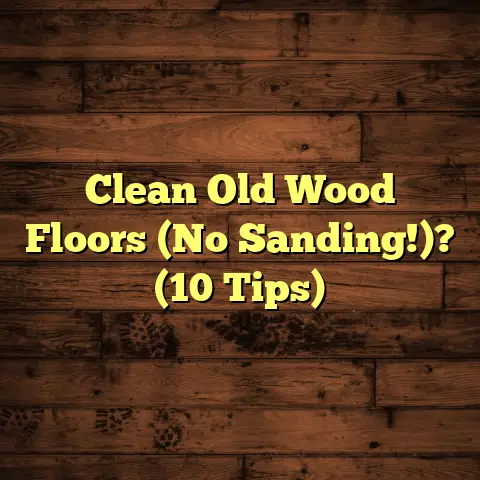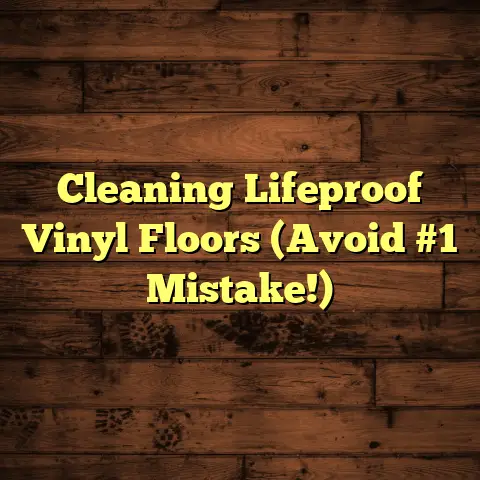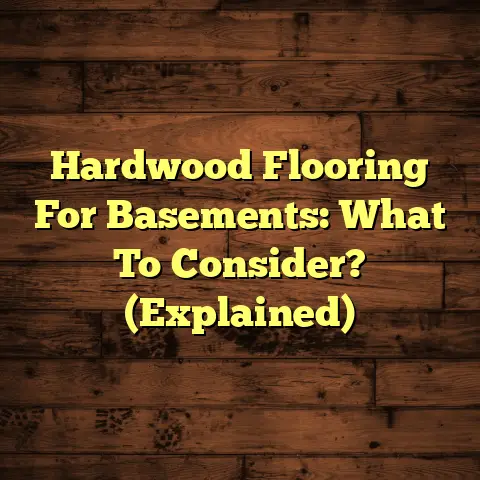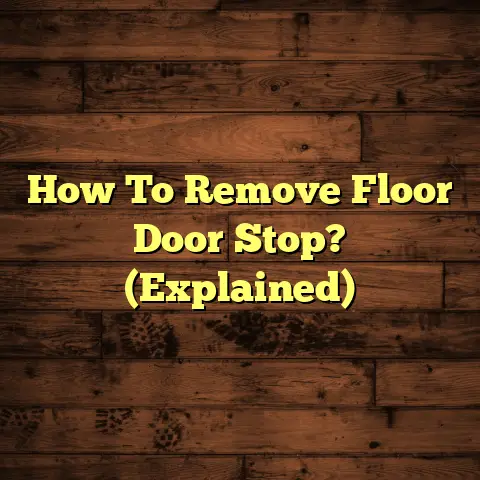Paint Garage Floor Cost? (1 Tip To Save $!)
A well-maintained garage floor isn’t just about looks, though. It’s about protecting your concrete from spills, making cleanup a breeze, and even boosting your home’s value! Plus, let’s be honest, a clean garage floor makes working on your car or storing your stuff way more enjoyable.
Here in SoCal, we deal with everything from scorching summer heat to occasional rainstorms. That means our garage floors take a beating. The constant temperature changes can cause cracking, and oil spills are just a fact of life for many of us car enthusiasts.
So, how much does it cost to get that garage floor looking sharp? Well, the average cost to paint a garage floor in Southern California ranges from $3 to $7 per square foot. I know, that’s a pretty wide range, but it depends on a few key factors.
Why do so many homeowners in SoCal choose to paint their garage floors? Besides the aesthetic appeal, it’s about protection. Paint acts as a barrier against oil, chemicals, and road salt. It also makes cleaning up those inevitable spills much easier. Plus, a freshly painted garage floor can really brighten up the space and make it feel more inviting.
Ready to dive into the details? Let’s break down those costs and find out how you can save some dough!
Section 1: Breakdown of Garage Floor Painting Costs
Okay, let’s get down to the nitty-gritty. As I mentioned, the average cost to paint a garage floor in Southern California is between $3 and $7 per square foot. But what makes up that price? It’s all about the type of paint, the size of your garage, and the condition of your existing floor.
Paint Types and Finishes
Here in SoCal, we have a few popular choices when it comes to garage floor paint:
-
Epoxy: This is the king of garage floor coatings. It’s super durable, resistant to chemicals and stains, and creates a glossy, professional-looking finish. Expect to pay $4 to $7 per square foot for epoxy.
-
Latex Acrylic: A more budget-friendly option, latex acrylic is easier to apply than epoxy and offers decent protection. It’s not as durable, though, so it might not be the best choice for high-traffic garages. You’re looking at $3 to $5 per square foot for latex acrylic.
-
Polyurethane: This is a great top coat option over epoxy that can add extra UV protection and scratch resistance. It typically runs $2 to $4 per square foot on top of the epoxy cost.
I usually recommend epoxy for its durability, especially considering our hot summers and occasional heavy use. You can find these paints at local suppliers like Home Depot, Lowe’s, or specialty paint stores like Dunn-Edwards. I always suggest checking their websites for current pricing and promotions.
Factors Influencing Costs
So, what makes one garage floor painting job cost more than another? Here are the main factors:
-
Size of the Garage: This one’s obvious, right? The bigger the garage, the more paint and labor you’ll need. Most garages in Southern California are either single-car (around 200 square feet) or two-car (around 400 square feet).
-
Condition of the Existing Floor: Got cracks, stains, or oil spots? That’s going to add to the cost. You’ll need to clean, patch, and possibly even grind the floor before you can even think about painting.
-
Preparation Work Required: Speaking of preparation, this is where a lot of the cost lies. Proper prep is crucial for a long-lasting finish. This includes cleaning, degreasing, etching (to open the concrete pores), and repairing any damage.
-
Accessibility and Site-Specific Challenges: Is your garage easy to access? Is the floor perfectly level? If not, you might run into extra costs. Older homes, in particular, can have uneven floors that require extra attention.
Real-World Examples
To give you a better idea, here are a couple of examples based on my experience working with homeowners in Southern California:
Case Study 1: The Basic Two-Car Garage
- Homeowner: Sarah in San Diego
- Garage Size: 400 square feet (standard two-car)
- Floor Condition: Minor cracks and some oil stains
- Paint Choice: Epoxy
- Preparation: Cleaning, patching cracks, etching
- Total Cost: $2,000 (including materials and professional labor)
Case Study 2: The DIY Single-Car Garage
- Homeowner: Mark in Los Angeles
- Garage Size: 200 square feet (single-car)
- Floor Condition: Relatively clean, minor stains
- Paint Choice: Latex Acrylic
- Preparation: Cleaning, light etching
- Total Cost: $300 (DIY materials only)
As you can see, the costs can vary widely depending on the size, condition, and whether you DIY or hire a pro.
Section 2: Additional Costs to Consider
Okay, so you’ve got a handle on the basic costs of paint and labor. But hold on, there are a few more expenses that can sneak up on you if you’re not careful.
Tools and Supplies
If you’re going the DIY route, you’ll need to factor in the cost of tools and supplies. Here’s a quick rundown:
-
Rollers and Brushes: You’ll need high-quality rollers and brushes designed for epoxy or concrete coatings. Don’t skimp here – cheap ones will shed and leave you with a mess. Expect to spend around $20-$50.
-
Painter’s Tape: Essential for creating clean lines and protecting trim. A roll or two should do the trick. Cost: $5-$10.
-
Mixing Buckets and Sticks: You’ll need these for mixing your epoxy or paint. $10-$20.
-
Safety Gear: Don’t forget gloves, safety glasses, and a respirator mask. Epoxy fumes can be nasty. $20-$40.
Labor Costs (If Hiring a Pro)
If you’re hiring a professional, labor costs will be a significant part of the overall price. In Southern California, labor rates for painters typically range from $50 to $100 per hour.
Keep in mind that labor costs can vary depending on where you live. Urban areas like Los Angeles and San Diego tend to have higher rates than more rural areas.
Additional Materials
Here are a few other materials you might need:
-
Primer: A good primer can help the paint adhere better and prevent stains from bleeding through. $30-$50 per gallon.
-
Sealant: Applying a sealant after painting can add extra protection and make the floor easier to clean. $40-$60 per gallon.
-
Anti-Slip Additives: If you’re concerned about slipping, especially when the floor is wet, consider adding an anti-slip additive to the paint. $20-$30 per container.
Potential Hidden Costs
Finally, be aware of these potential hidden costs:
-
Unexpected Repairs: Once you start prepping the floor, you might discover hidden cracks or damage that needs to be repaired.
-
Additional Coats of Paint: Sometimes, one coat just isn’t enough, especially if you’re using a lighter color or covering a heavily stained floor.
-
Waste Disposal: Disposing of leftover paint and chemicals can sometimes incur a fee.
Section 3: Comparing DIY vs. Professional Services
Alright, let’s weigh the pros and cons of tackling this project yourself versus hiring a pro.
DIY Garage Floor Painting: Pros and Cons
Pros:
-
Cost Savings: This is the biggest advantage. You’ll save a significant amount on labor costs.
-
Flexibility: You can work at your own pace and on your own schedule.
-
Sense of Accomplishment: There’s something satisfying about doing it yourself and seeing the results.
Cons:
-
Time Commitment: It takes time to properly prep the floor, apply the paint, and let it cure.
-
Physical Labor: It’s hard work! Be prepared to spend hours on your hands and knees.
-
Potential for Mistakes: If you’re not careful, you could end up with a subpar finish that doesn’t last.
Hiring a Professional: Pros and Cons
Pros:
-
Expertise: Professionals have the experience and knowledge to do the job right.
-
Quality Finish: They’ll use the right tools and techniques to ensure a durable, long-lasting finish.
-
Time Savings: You can sit back and relax while they take care of everything.
Cons:
-
Higher Cost: Labor costs can significantly increase the overall price.
-
Less Control: You’ll need to trust the professionals to do the job to your satisfaction.
DIY Step-by-Step Guide
If you’re feeling brave and want to try the DIY route, here’s a basic step-by-step guide:
-
Clear the Garage: Remove everything from the garage. Everything.
-
Clean the Floor: Use a degreaser to remove any oil or grease stains. Rinse thoroughly.
-
Repair Cracks: Fill any cracks or holes with a concrete patching compound.
-
Etch the Concrete: Use a concrete etching solution to open the pores of the concrete. This helps the paint adhere better.
-
Apply Primer (Optional): If you’re using a primer, apply it according to the manufacturer’s instructions.
-
Mix the Paint: Carefully mix the epoxy or latex paint according to the instructions.
-
Apply the First Coat: Use a roller to apply a thin, even coat of paint.
-
Apply the Second Coat (If Necessary): Wait the recommended amount of time, then apply a second coat.
-
Let it Cure: Allow the paint to cure completely before walking or driving on it. This can take several days.
DIY Success Stories
I’ve seen plenty of homeowners in Southern California successfully tackle their garage floor painting projects. I remember Mark from Los Angeles, who saved a ton of money by doing it himself. He spent a weekend prepping and painting his single-car garage, and he was thrilled with the results.
The key, he told me, was taking his time and following the instructions carefully.
Local Resources for DIYers
If you’re a DIYer in Southern California, here are some great resources:
-
Home Depot and Lowe’s: These big-box stores have a wide selection of paints, tools, and supplies.
-
Dunn-Edwards: A local paint store with knowledgeable staff and high-quality products.
-
Online Forums: Check out online forums and communities for tips and advice from other DIYers.
Section 4: Regional Factors Influencing Garage Floor Painting
Living in Southern California definitely has its perks, but our climate and common building materials can impact garage floor painting.
Climate Considerations
Our hot summers and mild winters can affect the choice of paint and application methods.
-
Temperature: High temperatures can cause the paint to dry too quickly, leading to cracking or peeling. It’s best to paint during cooler times of the day or year.
-
Humidity: High humidity can also affect the drying time and adhesion of the paint.
-
UV Exposure: Our strong sunlight can cause some paints to fade or yellow over time. Consider using a UV-resistant topcoat.
Common Materials
Most homes in Southern California have concrete garage floors. The type of concrete and its age can affect how well the paint adheres. Older concrete may be more porous and require more preparation.
Local Expert Insights
I chatted with a few local contractors about their experiences with garage floor painting in Southern California. They all agreed that proper preparation is key.
“I can’t stress enough how important it is to thoroughly clean and etch the concrete,” said John, a contractor in San Diego. “If you skip that step, the paint won’t adhere properly, and it’ll start peeling in no time.”
Another contractor, Maria from Los Angeles, emphasized the importance of using high-quality paint. “Don’t try to save money by buying the cheapest paint you can find,” she said. “It’s just not worth it in the long run.”
Section 5: One Key Tip to Save Money on Garage Floor Painting
Okay, I promised you a tip to save money on your garage floor painting project. Here it is:
Time your project to coincide with seasonal sales and promotions.
Local hardware stores and paint suppliers often run sales on paints and painting supplies during certain times of the year, such as:
-
Spring: Many stores offer discounts on home improvement products in the spring.
-
Summer: Look for summer sales and promotions, especially around holidays like Memorial Day and July 4th.
-
Fall: Fall is another great time to find deals on paint and supplies.
By waiting for a sale, you can save a significant amount of money on the materials you need. I’ve seen homeowners save as much as 20-30% by timing their projects strategically.
For example, I remember helping a client in Orange County who was planning to paint his garage floor. I advised him to wait for a Memorial Day sale at Home Depot. He ended up saving over $100 on paint and supplies!
Conclusion
Painting your garage floor can be a great way to improve the look and functionality of your garage. But it’s important to understand the costs involved before you start.
As we’ve discussed, the cost to paint a garage floor in Southern California can range from $3 to $7 per square foot, depending on the type of paint, the size of your garage, and the condition of your existing floor.
A well-painted garage floor not only looks great but also protects your concrete from spills, makes cleanup easier, and can even increase your home’s value.
Whether you decide to DIY or hire a professional, take the time to plan your project carefully and consider all the factors involved. And don’t forget to take advantage of seasonal sales and promotions to save money!
So, what are you waiting for? Get out there and transform that garage floor!
Call to Action:
Have you painted your garage floor in Southern California? I’d love to hear about your experiences! Share your tips, challenges, and questions in the comments section below. Let’s create a community where we can all learn from each other!





